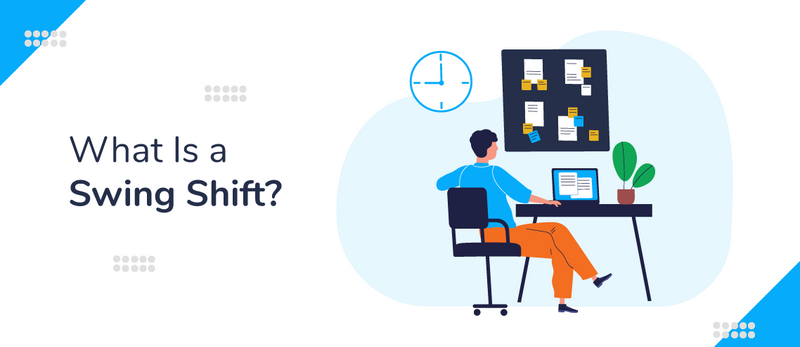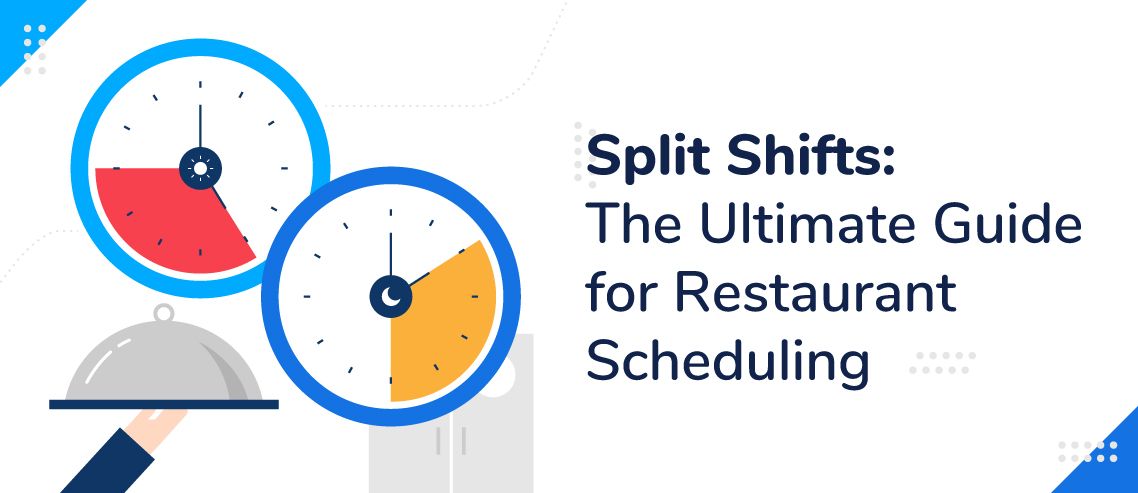Flex Schedule: How It Works, Benefits, and Software for SMBs

For many, COVID-19 served as an introduction to non-traditional schedules — in many cases, even the most traditional managers were forced to try out remote work. With remote work on the brain, there’s more interest in other types of flexible scheduling as well.
Here, we’re going to cover a specific type of flexible schedule called a flex schedule, aka flexitime schedule. You will learn what a flex schedule is, how it works, its benefits, and other types of flexible schedules that you can implement using SMB software.
What Is a Flex Schedule?
A flex schedule, aka flexitime schedule, is a type of schedule that allows workers to work during their preferred hours. In other words, instead of having to come in every day from 9 am to 5 pm, workers can come in at 3 pm and leave at 11 pm, or come in at 12 pm and leave at 8 pm. Essentially, the specific times that employees are at work become irrelevant so long as they’re fulfilling their duties and hours.
Keep in mind that a flex schedule is a specific type of flexible schedule. Flex schedule is not just another word for flexible schedules in general.
How Do Flex Schedules Work?
Flex schedules give workers the freedom to come to work at the times that suit them best instead of prescribing set shifts ahead of time. That means that working moms and dads can leave work to pick up their kids from school before completing their shift and night owls can work late hours if they find that coming into work early doesn’t fit their circadian rhythms as well.
Generally, flex schedules will either require employees to hit a certain number of hours in a specified time period (ex. 40 hours per week), but they can meet that goal however they want. In salaried positions, flex schedules may only require that employees hit their targets and complete their tasks regardless of how many hours they work.
Benefits of Flex Schedules for SMBs
Here are a few of the benefits that flex schedules bring to the table.
1. Improves Work-Life Balance
Put simply, flex schedules give employees more freedom. Usually, employees need to plan their personal lives around their work schedule, but flex schedules put the two on equal footing.
Sure, employees still need to meet certain requirements, such as making sure they work for 40 hours each week, but they can decide when they want to get those hours in. That means that they can decide to take a day off in the middle of the week for a day trip with the family as long as they make up those missed hours at some other time during the week — perhaps by doing a double shift one day or working 10-hour days for the remaining four days of the week.
2. Allows Employees to Work at Their Most Productive Hours
The world’s work structures are built for morning people. Overall, that works for quite a lot of the population — in general, people tend to feel most productive during the morning hours and less productive at night.
But that isn’t always the case. Some people have different circadian rhythms, which means that they’re most alert and productive at more unusual hours. For example, some people have Delayed Sleep-Wake Phase Disorder (DSWPD), which means that they get to bed later than they would like and have trouble waking up early. Others have a circadian rhythm that doesn’t operate in 24-hour cycles, meaning that they might shift their bedtime and wake time by two hours every day. And of course, some people just prefer to work at different hours even if they don’t have a diagnosable disorder.
Forcing these people to work on a schedule that doesn’t suit their needs and preferences isn’t good for anyone and can lead to decreased productivity. Flex schedules, on the other hand, allow workers to come into work at the times that they’ll be most productive.
3. Improves Morale and May Reduce the Risk of Burnout
So far, we’ve mainly been giving examples of how flex schedules can provide benefits in the short term, like allowing a parent to go pick up their kids or take a day off without using PTO. But these short-term benefits can add up over time to provide long-term benefits like increased morale and improved work satisfaction.
Plus, they may also reduce the risk of burnout. Just think about how hard working on a schedule that doesn’t fit your circadian rhythm could be on your health long-term, or how stressful it can be to always have to juggle your work and your family. Allowing employees to choose when they work can take all these stressors away and can keep workers happier and healthier.
4. May Reduce Absenteeism
Absenteeism is a problem that occurs for many reasons, some of which include a feeling of being unappreciated and undervalued, conflicts between an employee’s work and personal life, and physical and mental health issues.
Flex schedules can help alleviate all of these issues. Employees who are offered flex schedules are more likely to feel that they are respected and think well of their employers, and they are less likely to have unresolvable work-life conflicts. Plus, being able to choose when they work means that they won’t have to stress about getting on a schedule that doesn’t work for them, and stress can cause lots of physical and mental health issues.
Implementing Other Types of Non-Traditional Schedules with ZoomShift
ZoomShift currently supports non-traditional schedules besides flex and flexitime schedules. Specifically, ZoomShift can support split-shift schedules and 9/80 schedules, which can sometimes be seen as more flexible schedules, even though they aren’t considered flex schedules in the traditional sense.
1. 9/80 Schedules
A 9/80 schedule is a schedule that gives employees an extra day off every other week. The schedule is set up so that employees work eight 9-hour days and one 8-hour day during each two-week period. This allows them to hit 80 hours of work over two weeks and also take an extra day off.
2. Split-Shift Schedules
A split shift is a shift that’s broken (split) into two parts by an extended unpaid break. For example, an employee might work from 9 am to 12 pm, take a break until 5 pm, and then return to finish their shift until 10 pm.
Split shifts can be viewed as more flexible, but they can also be seen as even less flexible. In fact, California law states that employees working a split shift are paid a premium to compensate them for the extra trouble. So, tread carefully and check local and state laws.
How ZoomShift helps you stemlines your employee scheduling
Key Takeaways
Flexible work schedules offer employees more control over when they work, which can help lead to increased productivity, improved morale, and reduced absenteeism.
Flexible work arrangements can also benefit employers by improving employee retention, cutting down on workplace distractions, and promoting a more collaborative work environment.
Check out ZoomShift today to see how our scheduler may be able to help your employees and your business.
JD enjoys teaching people how to use ZoomShift to save time spent on scheduling. He’s curious, likes learning new things everyday and playing the guitar (although it’s a work in progress).



